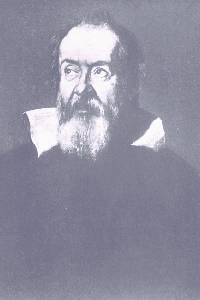Born February 15, 1564, Galileo Galilei risked his life to bring science to the common people. At a time when heliocentricity was considered heresy, Galileo worked to show that Nicolaus Copernicus' model of the heavens more accurately described the motions of the heavens than the geocentric model proposed by Ptolemy and supported by the Catholic Church. Galileo developed numerous experiments that illustrated the differences between the two models, and despite the current scholarly standards of writing scientific data in Latin, Galileo wrote and distributed his work in the common tongue of Italian -- making the knowledge accessible to poor and rich alike. In his book, Dialogue Concerning the Two Chief World Systems, Galileo mocked the Catholic Church and the followers of Ptolemaic model (among other issues also discussed in the book) and in so doing, infuriated the Pope and the Church. Being a friend of the Pope, Galileo was saved from the typical fate of heretics -- death -- but was sentenced to house arrest for the rest of his life. Galileo died in 1642, blind and having forever changed the history of science.
At the links provided, you can read more about his life and his work. Perhaps the most common-knowledge notable accomplishment of Galileo's came when he used a telescope to look at the heavens. He was the first to look at the Moon and Jupiter through a telescope. He believed that there were seas on the Moon, and his names are still in use today, even though they are areas of cooled lava flows. Additionally, in his honor, the four largest moons of Jupiter (which he observed himself and sketches of remain in his writings) have been collectively named the Galilean Moons. Next time you have the chance to catch Jupiter in the night sky, take a look.... I watched nightly for a week myself.... It is simply amazing to realize that we can watch these moons orbit Jupiter from such a great distance without the aid of humongous telescopes!
Sources:
- Course I took at Mt. San Jacinto College, Astronomy 101, instructed by Dr. Daniel Barth
- Rice Biography
- DCTCWS translation

3 points.
ReplyDeleteby the way, I've seen Galileo's finger. jealous?
ReplyDeletehttp://www.atlasobscura.com/places/galileos-middle-finger
Oh wow! Lol
DeleteHaha, that's awesome.
Delete